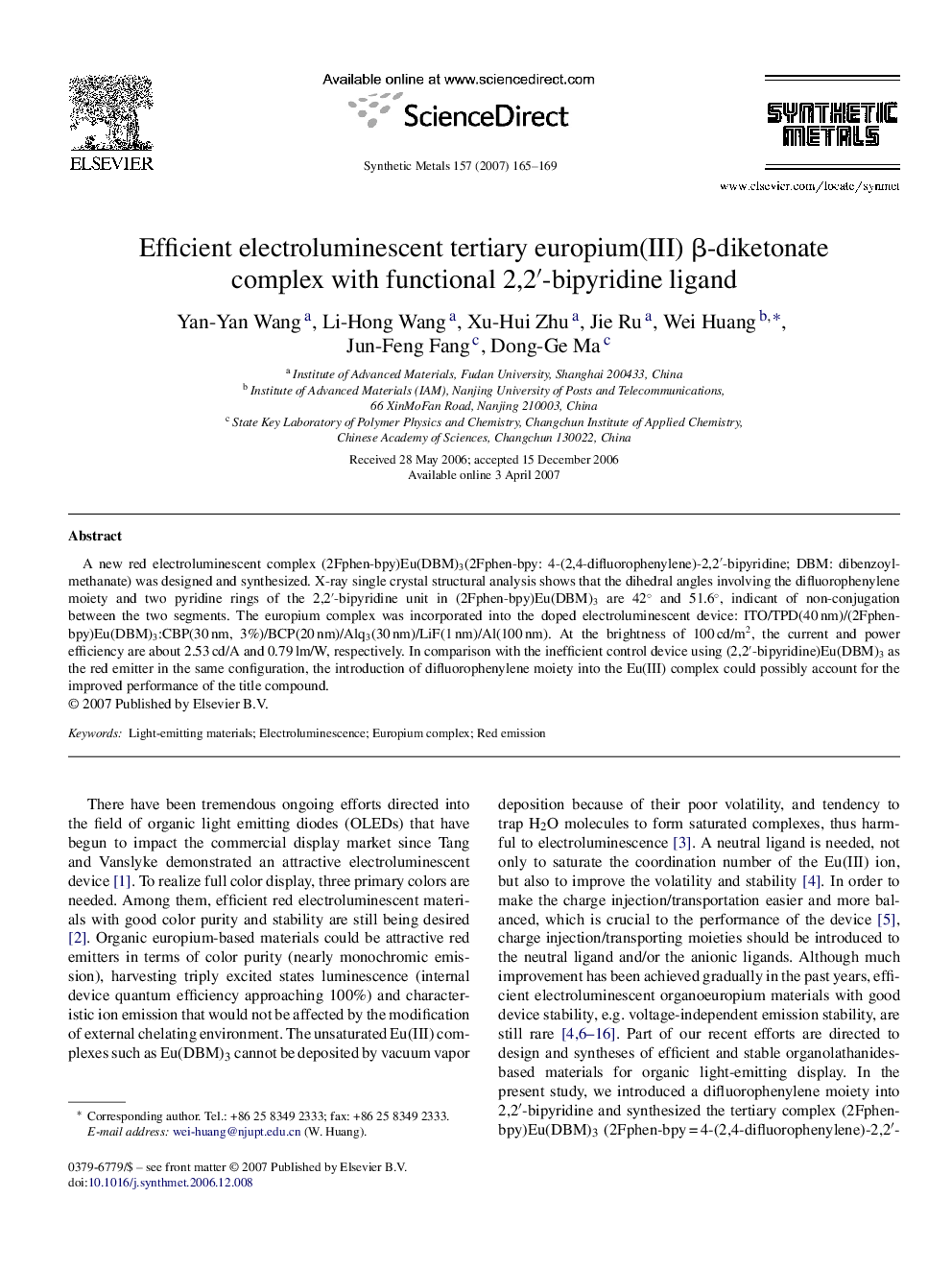| Article ID | Journal | Published Year | Pages | File Type |
|---|---|---|---|---|
| 1443543 | Synthetic Metals | 2007 | 5 Pages |
Abstract
A new red electroluminescent complex (2Fphen-bpy)Eu(DBM)3(2Fphen-bpy: 4-(2,4-difluorophenylene)-2,2â²-bipyridine; DBM: dibenzoylmethanate) was designed and synthesized. X-ray single crystal structural analysis shows that the dihedral angles involving the difluorophenylene moiety and two pyridine rings of the 2,2â²-bipyridine unit in (2Fphen-bpy)Eu(DBM)3 are 42° and 51.6°, indicant of non-conjugation between the two segments. The europium complex was incorporated into the doped electroluminescent device: ITO/TPD(40 nm)/(2Fphen-bpy)Eu(DBM)3:CBP(30 nm, 3%)/BCP(20 nm)/Alq3(30 nm)/LiF(1 nm)/Al(100 nm). At the brightness of 100 cd/m2, the current and power efficiency are about 2.53 cd/A and 0.79 lm/W, respectively. In comparison with the inefficient control device using (2,2â²-bipyridine)Eu(DBM)3 as the red emitter in the same configuration, the introduction of difluorophenylene moiety into the Eu(III) complex could possibly account for the improved performance of the title compound.
Related Topics
Physical Sciences and Engineering
Materials Science
Biomaterials
Authors
Yan-Yan Wang, Li-Hong Wang, Xu-Hui Zhu, Jie Ru, Wei Huang, Jun-Feng Fang, Dong-Ge Ma,
